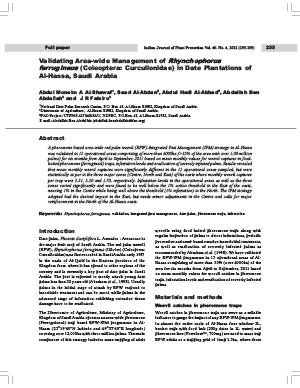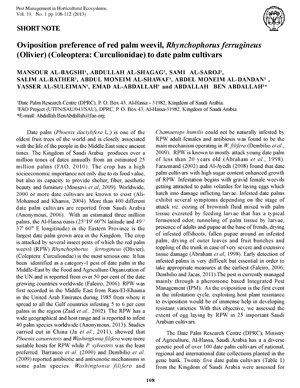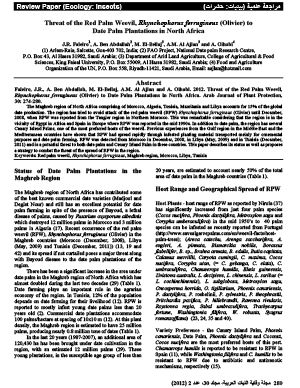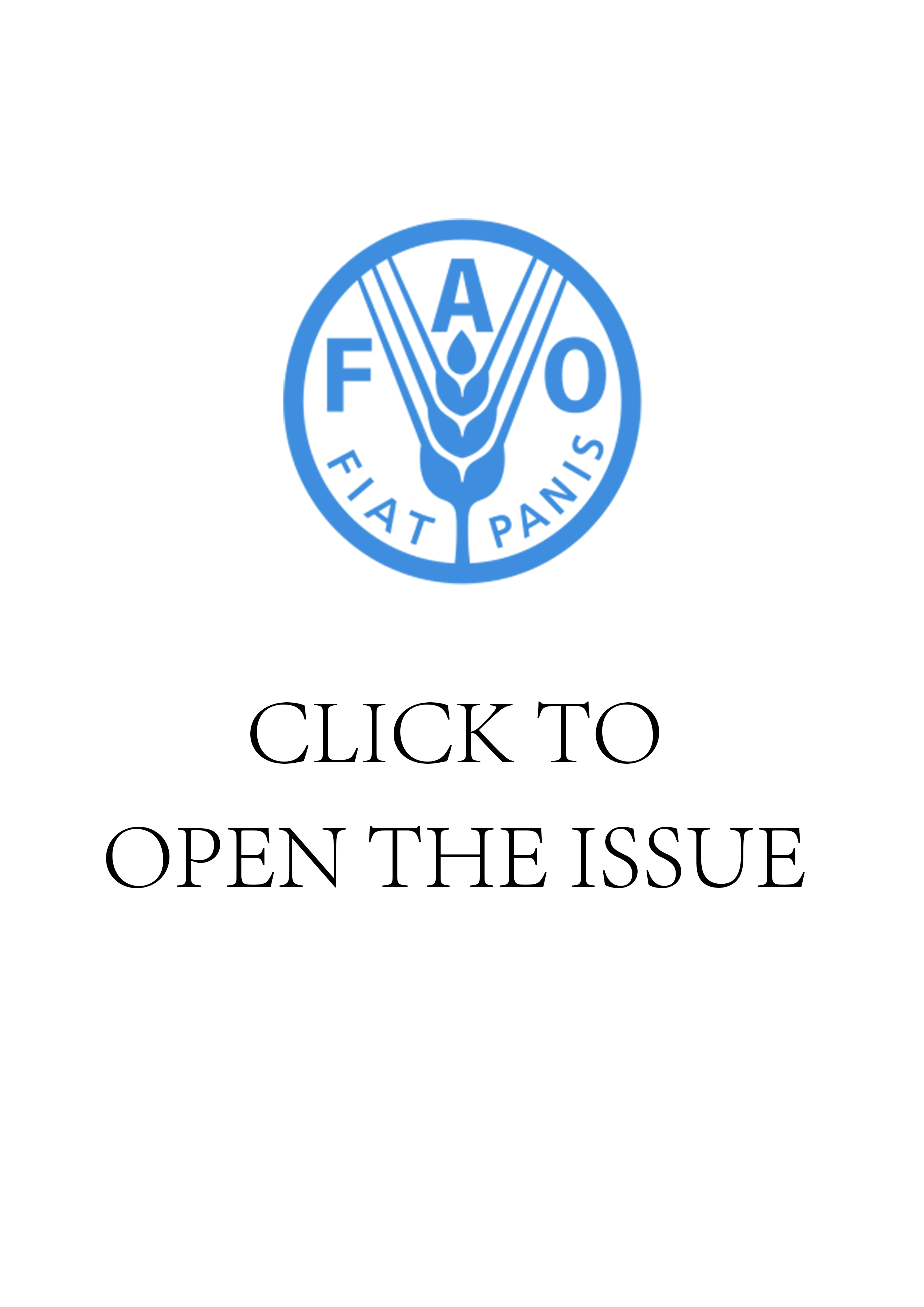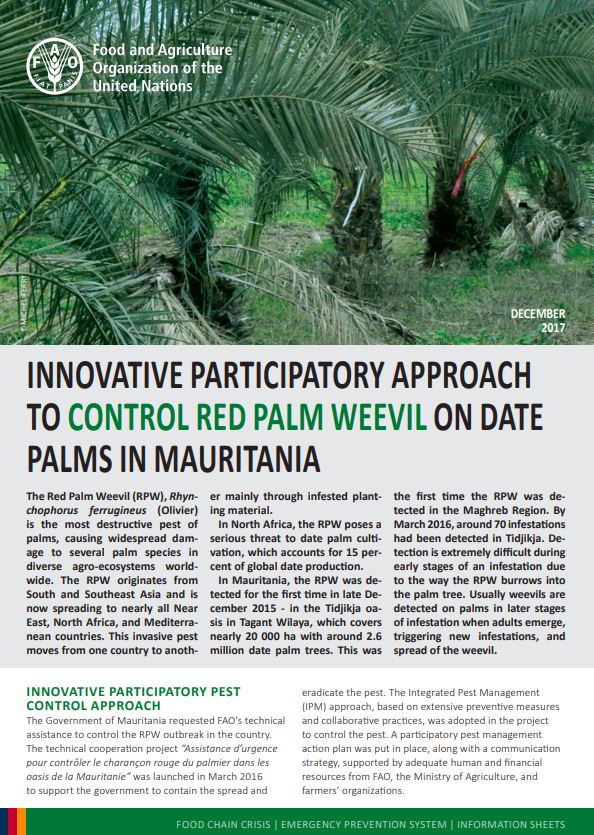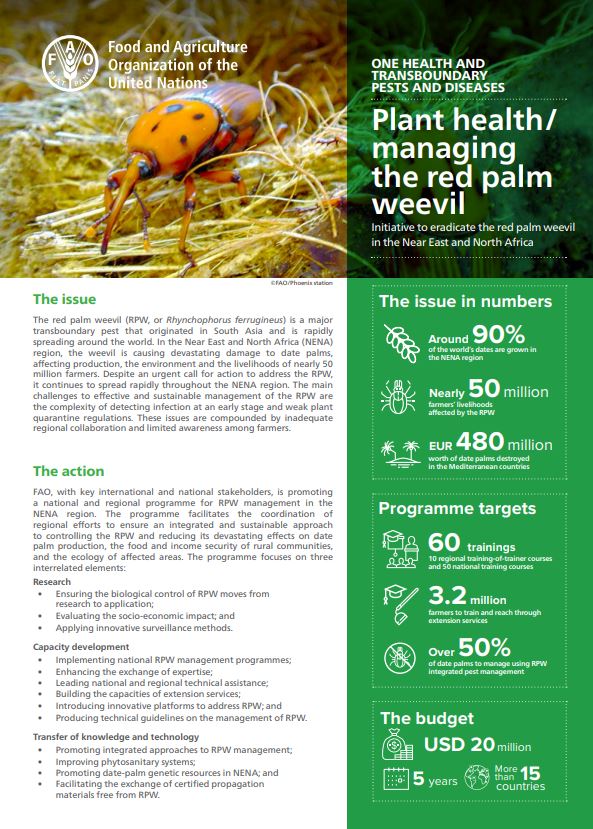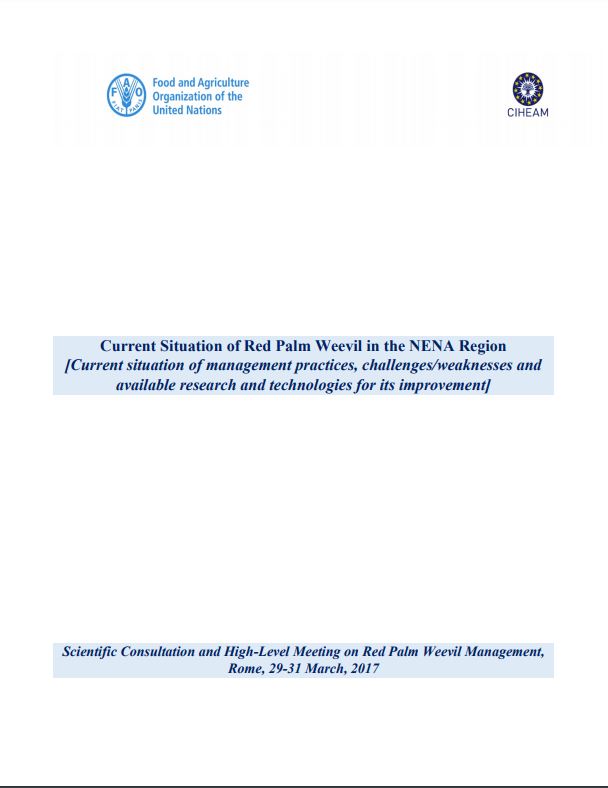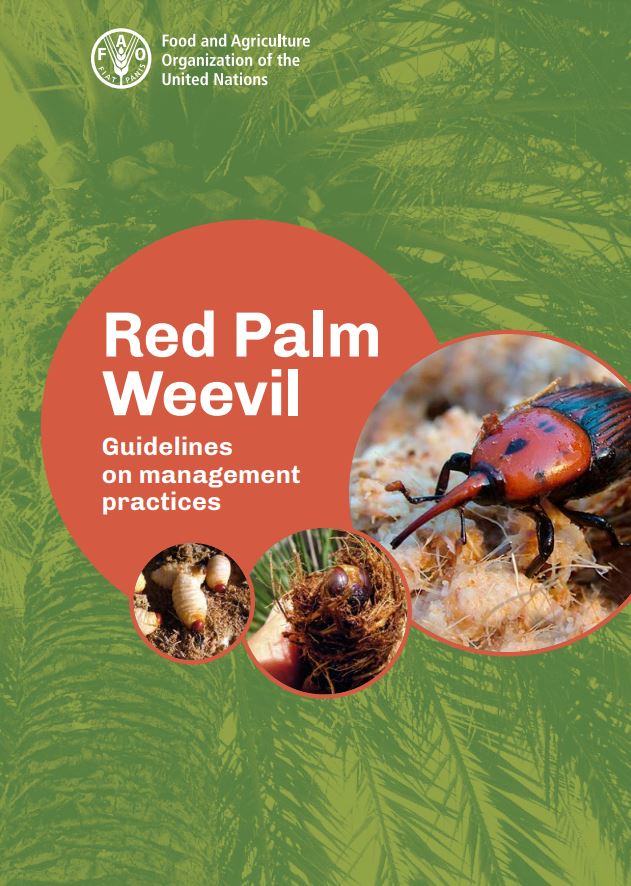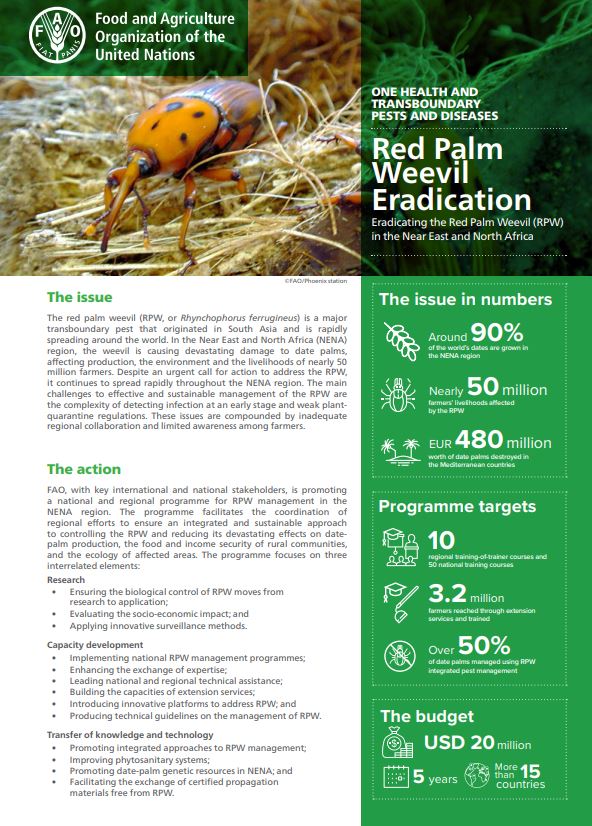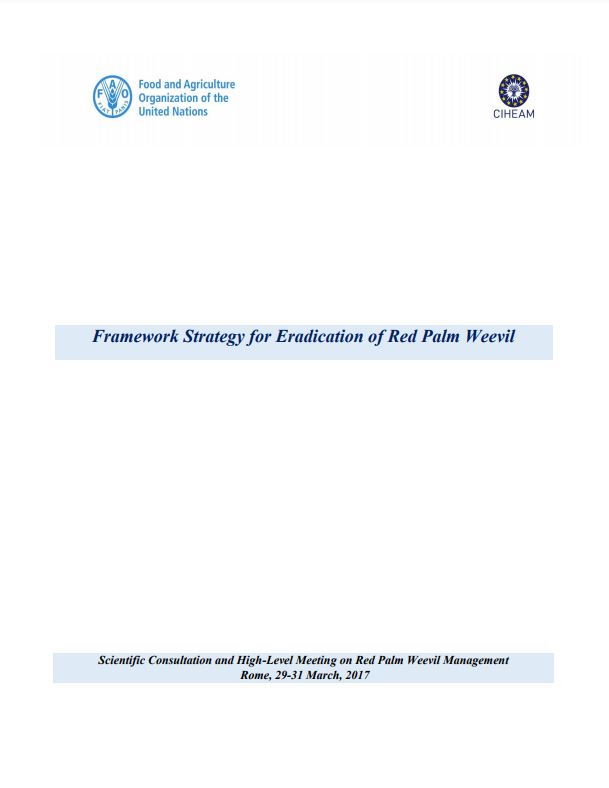00:00:00
Description
The red palm weevil (RPW) Rhynchophorus ferrugineus (Olivier), (Coleptera: Curculiondae) is a key pest of date palm in the Middle East. This weevil is currently being reported from over 50% of the date growing countries of the world. The date palm Phoenix dactylifera cropped area in the Middle East, has significantly increased during the last two decades where date palm is mainly propagated through offshoots. The red palm weevil larvae are often found in the offshoots, resulting in the spread of the pest and also its re-inoculation where RPW is already controlled. Currently, there are no quarantine protocols to ensure that date palm offshoots which are transported for planting, are free of RPW larvae. In this study, date palm offshoots were sprayed while still attached to the mother palm and also dipped separately with Fipronil 3.5% (Thripguard 35 SCTM) and Imidacloprid 35% (Confidor 350 SCTM) a day after detachment from the mother palm. Fipronil and Imidacloprid were tested at 0.008 % and 0.01%, respectively. Results revealed that dipping gave complete mortality of the larvae. Dipping was significantly better than spraying since spraying resulted in only partial mortality of the larvae. It was also seen that dipping offshoots in Fipronil 0.004% and 0.002% for 30 and 60 min, respectively, resulted in 100% mortality of the larvae tested. Further, toxicity studies resulted in complete mortality of larvae and adults that were exposed to offshoot tissue that was dipped in Fipronil at the above concentrations. For this reason, it is recommended to dip date palm offshoots in 0.004% Fipronil for 30 min before transporting to ensure complete mortality of the hidden larval stages, if any and complete certification and transport of the treated offshoots to the new planting site within 72 h of treatment.

 Coming soon
Coming soon










